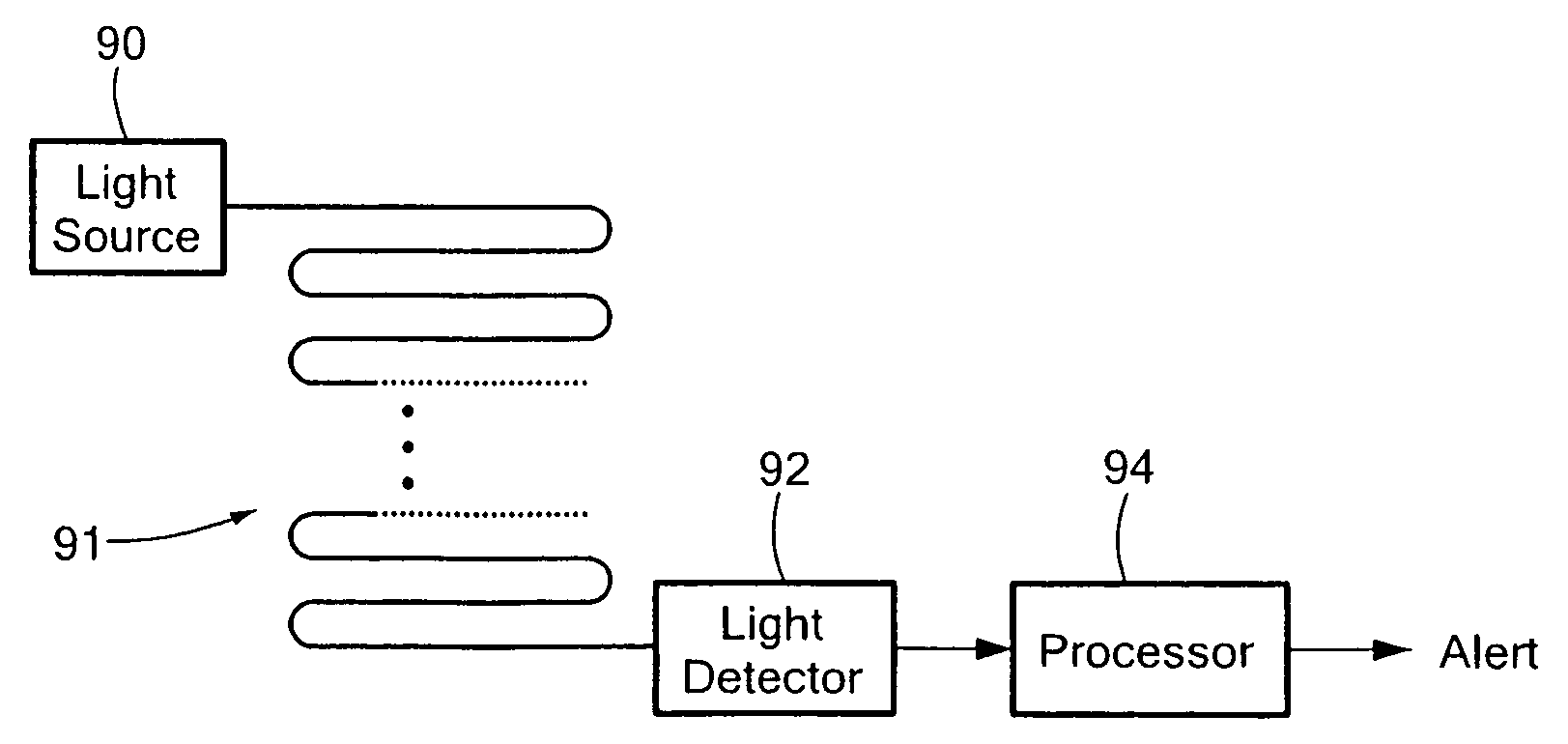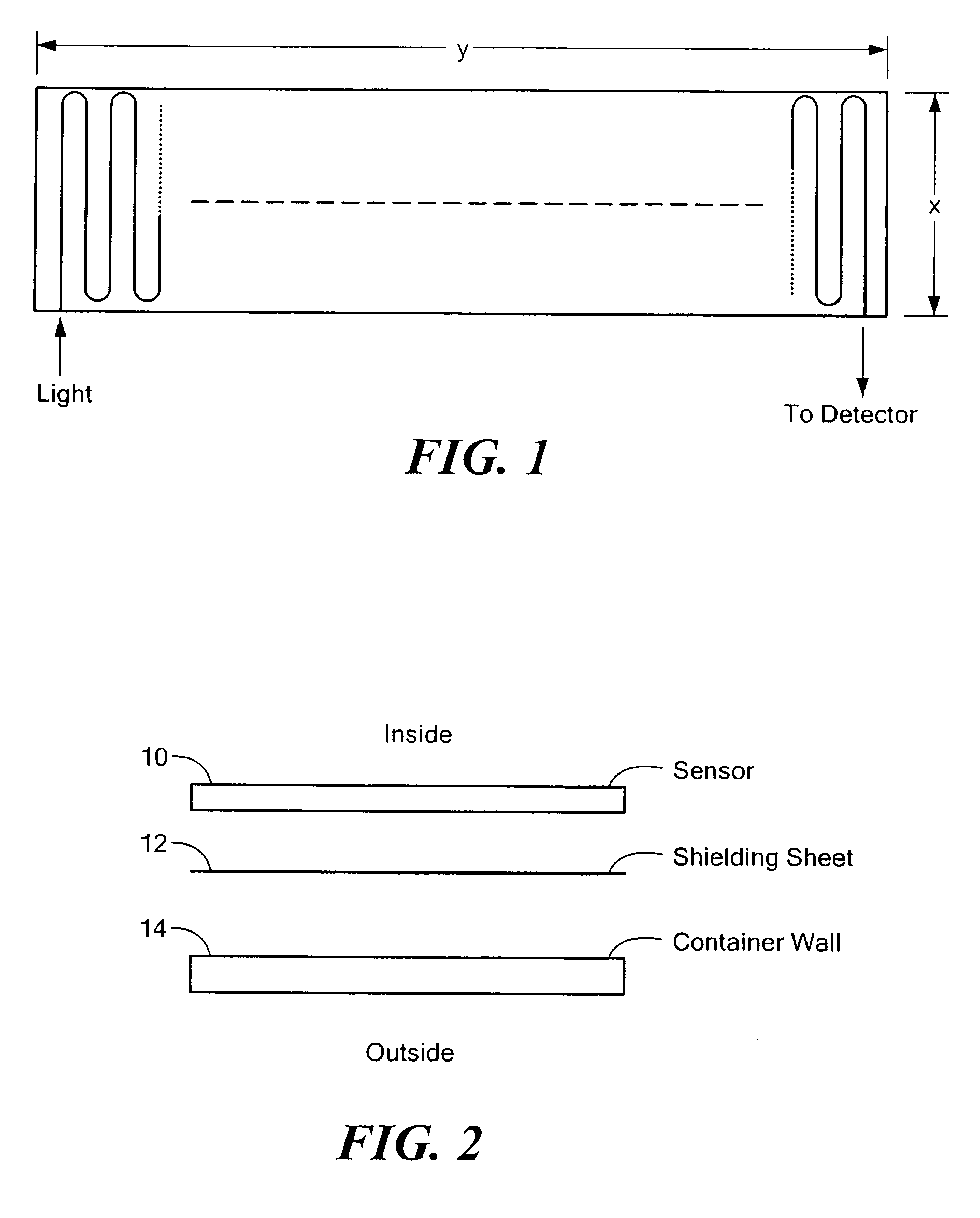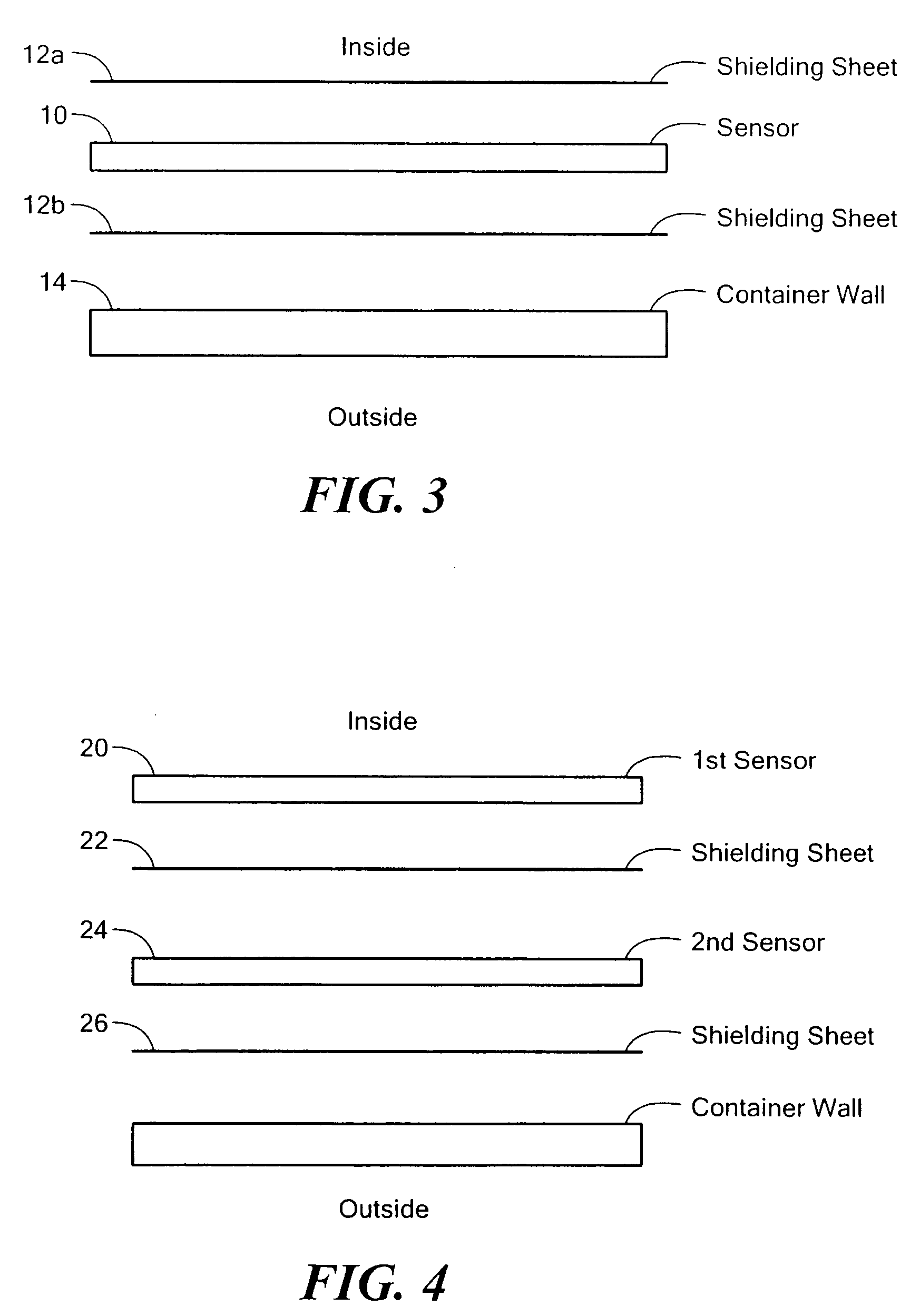Integrated optical neutron detector
a technology of optical neutron detector and integrated optical path, which is applied in the field of integrated optical neutron detector, can solve the problems of damage to the liner sheet, optical path broken or altered, and impingement on the liner sheet, so as to reduce or alter the light transmissibility of the optical path
- Summary
- Abstract
- Description
- Claims
- Application Information
AI Technical Summary
Benefits of technology
Problems solved by technology
Method used
Image
Examples
Embodiment Construction
[0028]This application is related to the present inventor's U.S. Pat. No. 7,211,783 issued May 1, 2007, and U.S. application Ser. No. 11 / 444,160 filed May 31, 2006, the disclosures of which are incorporated by reference herein.
[0029]A single mode optical fiber, such as Corning SMF-28e, which has a glass core 8 microns thick covered by cladding 150 microns thick, is used to totally envelop the inside walls of a shipping container. A standard ISO 20 foot container will utilize approximately 15 km of optical fiber, and approximately 30 km of optical fiber is needed for a 40 ft container to create a ¼″ spatial resolution between individual optical fiber strands. Other greater or lesser resolutions can be attained as a function of the length of optical fiber used. These are the two basic size standard shipping containers used in the maritime industry. The reason for using a single fiber as a continuous light path is because it can easily carry a light signal without repeaters or amplifie...
PUM
 Login to View More
Login to View More Abstract
Description
Claims
Application Information
 Login to View More
Login to View More - R&D
- Intellectual Property
- Life Sciences
- Materials
- Tech Scout
- Unparalleled Data Quality
- Higher Quality Content
- 60% Fewer Hallucinations
Browse by: Latest US Patents, China's latest patents, Technical Efficacy Thesaurus, Application Domain, Technology Topic, Popular Technical Reports.
© 2025 PatSnap. All rights reserved.Legal|Privacy policy|Modern Slavery Act Transparency Statement|Sitemap|About US| Contact US: help@patsnap.com



